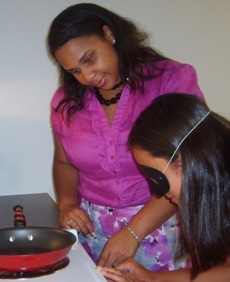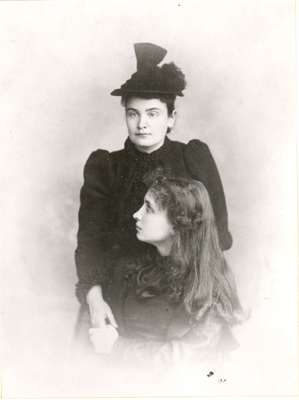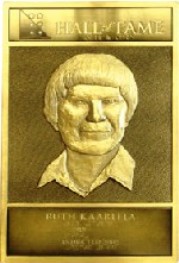Blindness Perceived as Devestating Disability
Blindness has long been perceived as the most devastating disability. Society holds that vision loss leaves a person helpless and hopeless. As a direct result of this opinion, many who are diagnosed with a vision loss think they have no hope for the future.
Many people who have gone through the experience of a vision loss know the opposite is true. Anyone who possesses any degree of vision loss can return to an active and independent lifestyle. Some individuals report that they have a more productive life after a vision loss!
Steps to Return to Active Life

Caption: Certified Vision Rehabilitation Therapist Lachelle Smith Teaches Cooking Skills to Student
One of the first steps toward returning to an active life is to learn new ways to do the routine tasks of daily living. A Vision Rehabilitation Therapist (VRT) is a trained professional armed with time-tested techniques for teaching adapted daily living skills (ADLS). ADLS are simply alternative methods to perform common tasks, which will allow individuals with a vision loss to resume most daily activities safely and independently. For example, a VRT might apply high contrast, tactile labels to household appliances, making them easier to see, or conduct a lighting assessment to determine the best type of light to use for reading the newspaper.
Difference Between Reacting and Responding
Consider for a moment, what’s the difference between reacting and responding? Often when we hear any discouraging news, our knee jerk instinct is to react. “What do you mean by that?” “Who Said that?”
That is a reaction, and is normal. When you care so much about something, you get attached to it, emotional about it, and any criticism that surrounds it causes this knee jerk reaction. But is it a productive reaction? No.
When we respond, on the other hand, we ask thoughtful questions, try to find solutions, and we try to render satisfaction, or to be answerable. When we respond, we are taking a positive step toward rising to the challenge set before us. Every one of us will react when faced with a situation we do not like or understand. A sign of professional maturity is when we can quickly leave the reacting mode, and enter the responding mode. That is what will ultimately bring solutions to problems.
How Louis Braille Responded to Blindness

Where would we be if Louis Braille had just found a pretty girl to read to him instead of responding to the challenge of print? In 1812 Louis Braille became blind as a result of an accident. He took it upon himself to respond to the problem. Braille was introduced to a raised dot code, developed by a former French soldier named Charles Barbier, a code Barbier called “night writing,” composed of 12 raised dots. Barbier imagined this code used by soldiers in the field to exchange and read messages without using a light. Braille re-engineered and modified the code, trimming it down to the 6 dot system, which we now so affectionately call, Braille!
In 1829 Braille published the first-ever Braille book. In 1868 the Royal National Institute for the Blind began promoting Braille, and it began to spread worldwide. That’s an example of the power of a response over a reaction!
Pioneers in the Field
In 1829, the New England Asylum for the Blind (now known as Perkins School for the Blind) opened its doors for the first time, heralding new opportunities for individuals with vision loss. The director, Samuel Gridley Howe, sought to accommodate the needs of blind citizens. This program was so successful in educating individuals who were blind that he proceeded on with his work to open the first state school for the blind in Ohio, shortly thereafter. He was also instrumental in establishing institutions of this kind throughout the country. Howe’s powerful response to this need was so successful, that Perkins is still vital and active today!
Vision Rehabilitation Heroes

Anne Sullivan Macy, a graduate of Perkins Institute, and Helen Keller’s home teacher, fits that bill as detailed in Steve Kelley’s homage to Anne. Also read about Dr. Ruth Kaarlela and other teaching pioneers such as Alice Raftary who have made a difference in the field of vision rehabilitation. Both are in the American Printing House Hall of Fame.

Where would we be without these pioneers? Their responses to these challenges encountered by visually impaired individuals snowballed into the profession we call, Vision Rehabilitation Therapy. Of course, many, many changes have taken place along the way!
Vision Rehabilitation Therapist Awareness Week
The week of Sunday, April 10th, through Saturday, April 16th, 2016, is Vision Rehabilitation Therapist Awareness Week. Last year the week was officially changed to April to commemorate Anne Sullivan Macy’s birthday which is April 14. This week has been set aside to honor Vision Rehabilitation Therapists, and draw attention to the training they provide individuals with a vision loss. Please find a way to honor the VRT in your life. And be sure to take action on AFB’s National Alice Cogswell and Anne Sullivan Macy Act call in day on April 14.